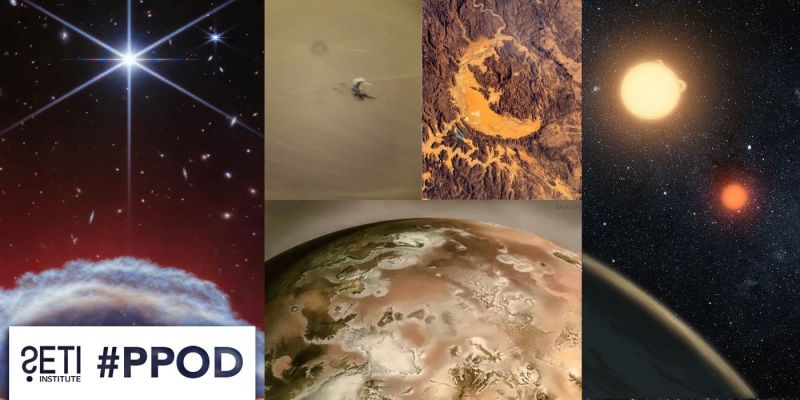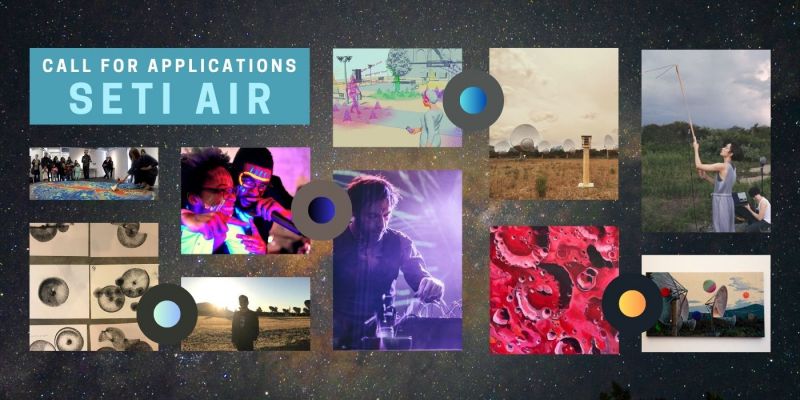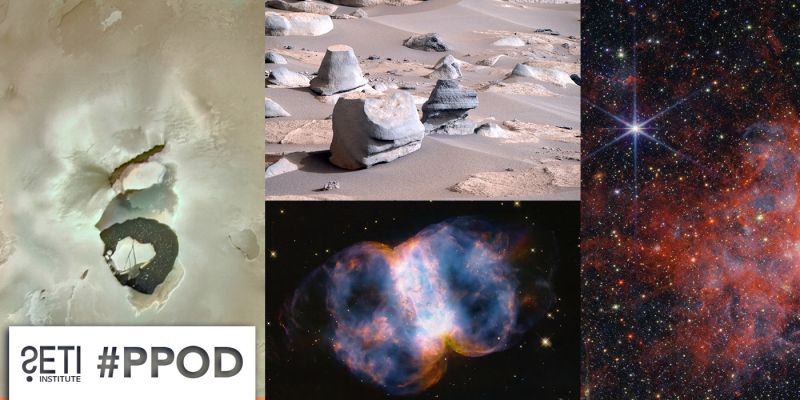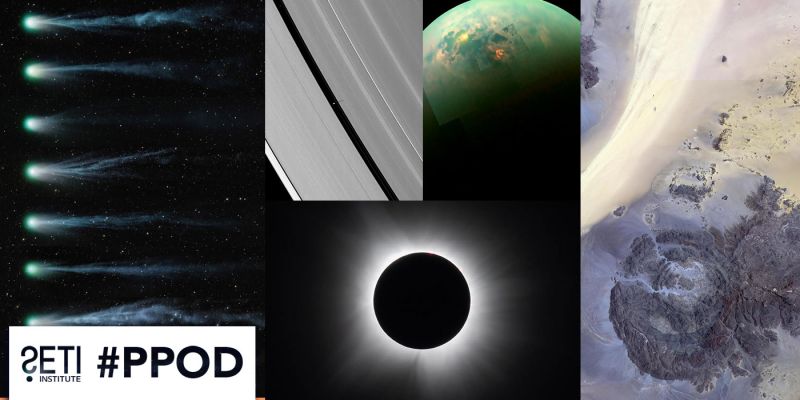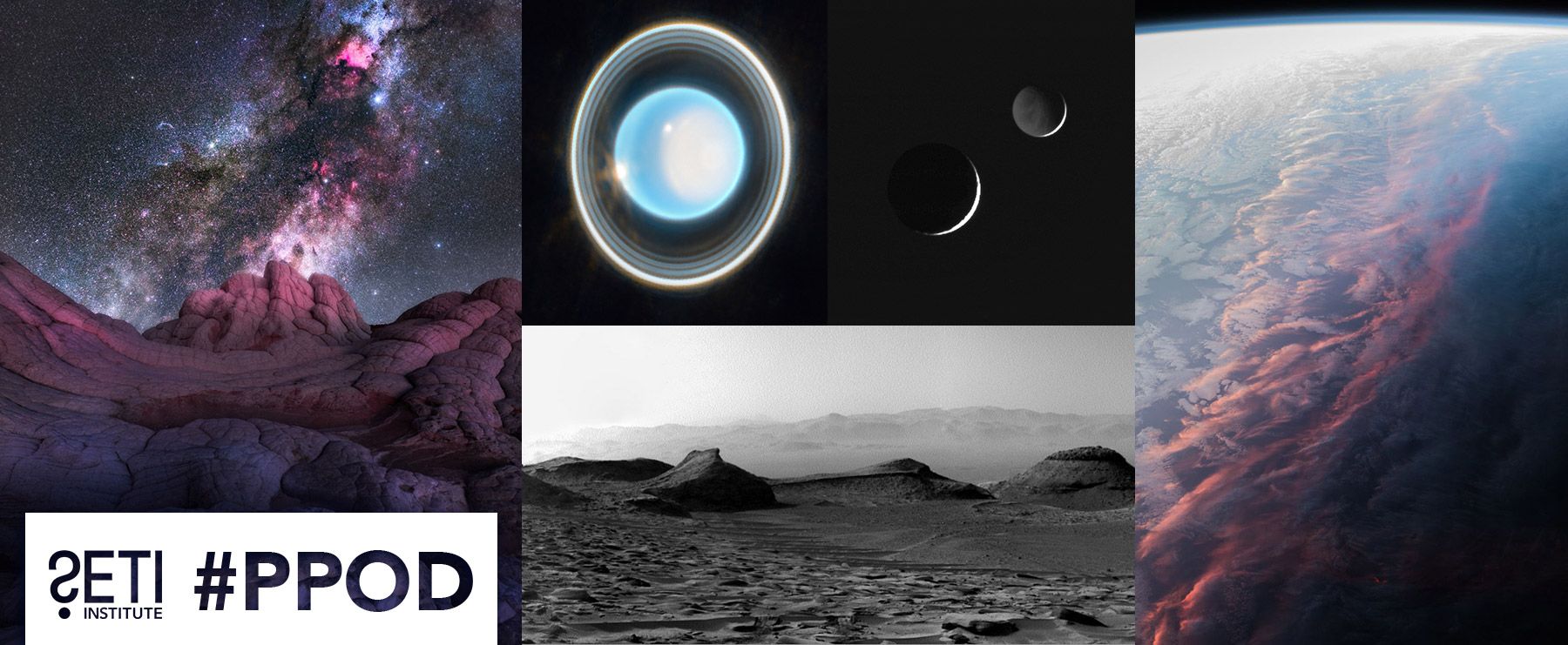
Planetary Picture of the Day
Week of April 3, 2023
Sunset from above, a Martian panorama, and a new image of Uranus and its moons taken by JWST.
Monday, April 3, 2023
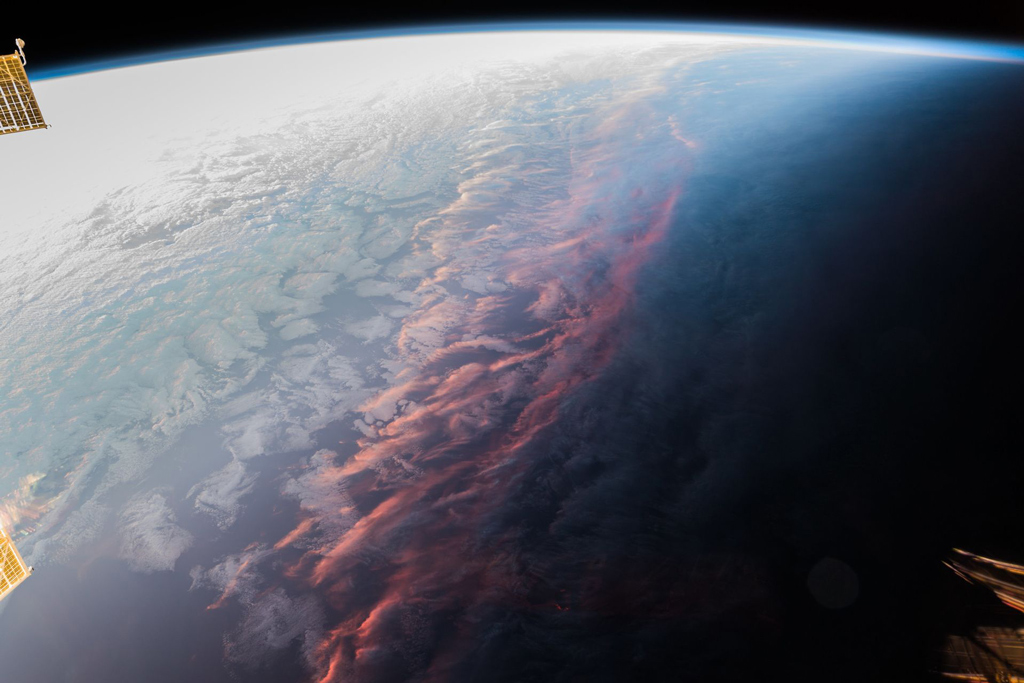
Sunset From Above
This is what a sunset on Earth looks like from above. Taken on October 28, 2018, by ESA astronaut Alexander Gerst from the International Space Station.
Tuesday, April 4, 2023

On the Slopes of Mount Sharp
Amazing landscapes captured by NASA’s Curiosity rover at Gale crater.
Wednesday, April 5, 2023
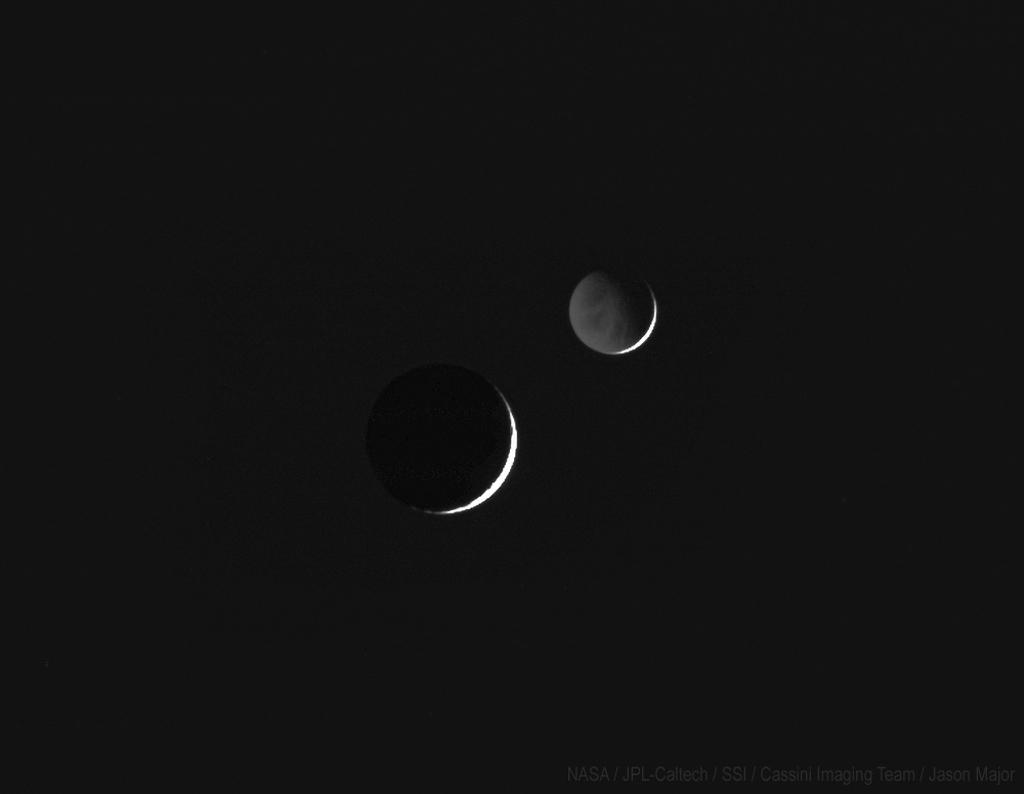
Dueling Crescents
Saturn's moons Rhea (foreground) and Dione (background) crescent-lit by sunlight and, in Dione's case, reflected light from Saturn, imaged with the narrow-angle camera on NASA's Cassini spacecraft on March 27, 2006. The two moons were about 630,600 km apart at the time.
Thursday, April 6, 2023
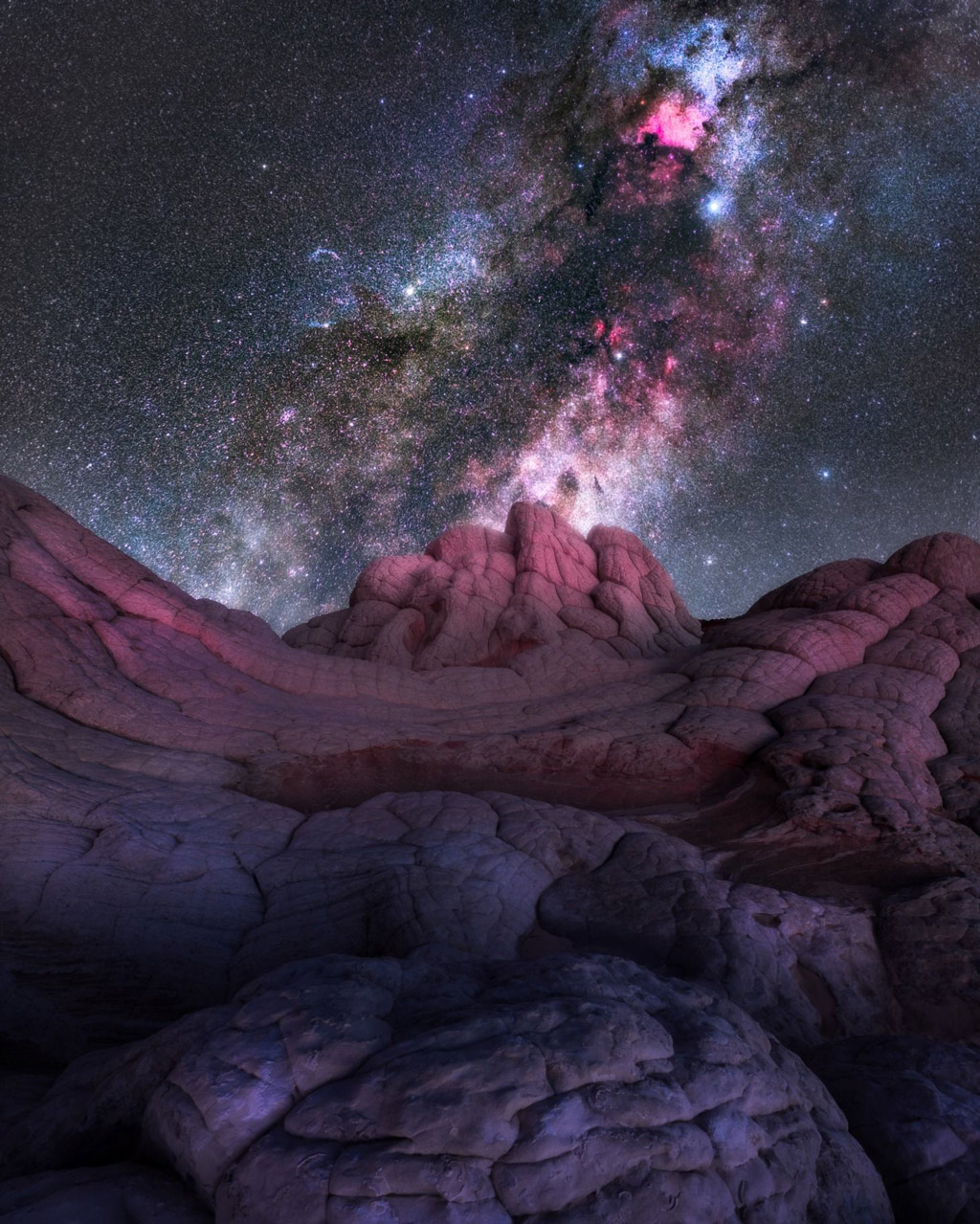
Cygnus in the Pocket
This image is the Cygnus constellation as photographed from White Pocket, AZ. Enjoy all of the beautiful nebulosity this part of the sky contains and check out the very small but visible east and west Veil nebuale on the left side. Additionally, one can find the much larger North American nebula and the Pelican nebula.
White Pocket is a part of the Vermillion Cliffs National Monument, which is famous for its unusually shaped outcrops of the Navajo sandstone, including the 'brain rocks' seen at this location.
Friday, April 7, 2023
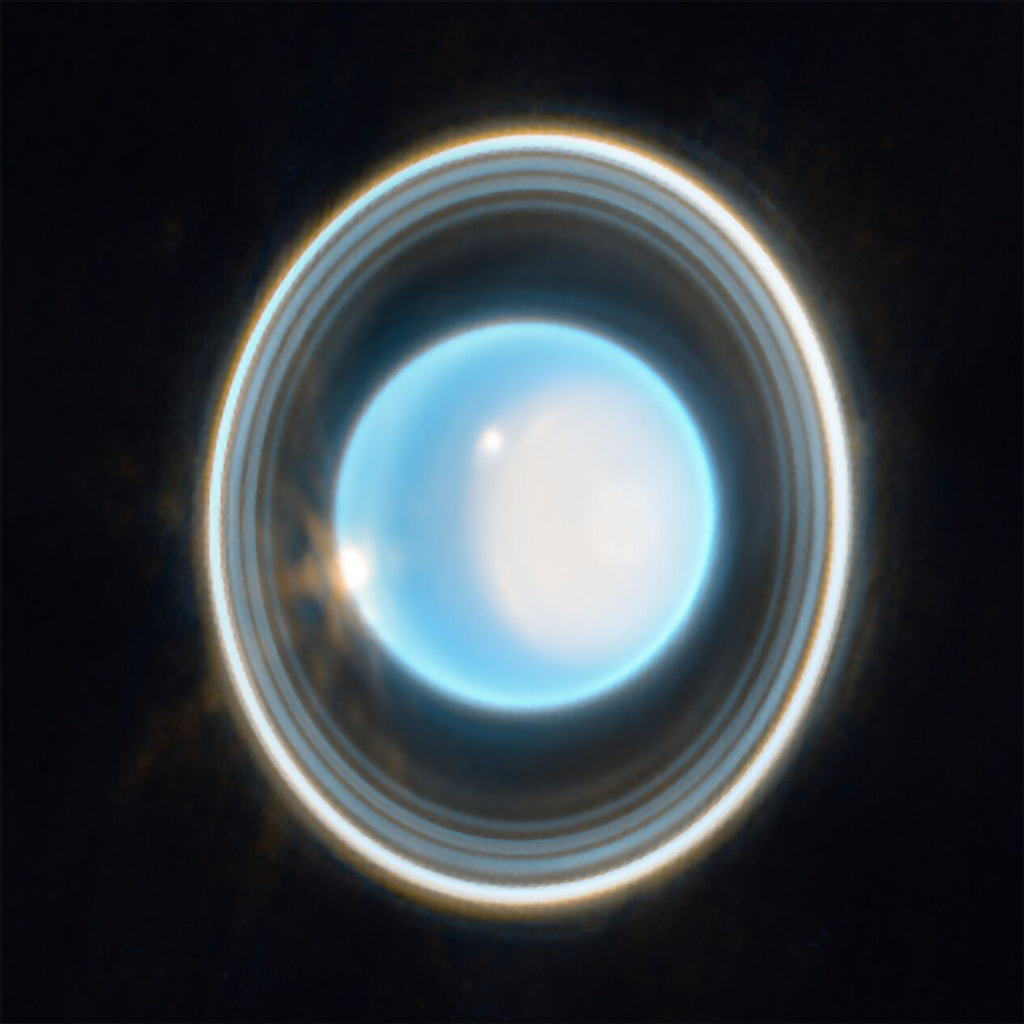
JWST Spots Local Ringed Planet
This zoomed-in image of Uranus, captured by Webb’s Near-Infrared Camera (NIRCam) on 6 February 2023, reveals stunning views of the planet’s rings. The planet displays a blue hue in this representative-color image, made by combining data from two filters (F140M, F300M) at 1.4 and 3.0 microns, which are shown here as blue and orange, respectively.
On the right side of the planet there’s an area of brightening at the pole facing the Sun, known as a polar cap. This polar cap is unique to Uranus because it is the only planet in the solar system tilted on its side, which causes its extreme seasons. A new aspect of the polar cap revealed by Webb is a subtle brightening near the Uranian north pole.
At the edge of the polar cap lies a bright cloud as well as a few fainter extended features just beyond the cap’s edge, and a second very bright cloud is seen at the planet’s left limb. Such clouds are typical for Uranus in infrared wavelengths, and likely are connected to storm activity.
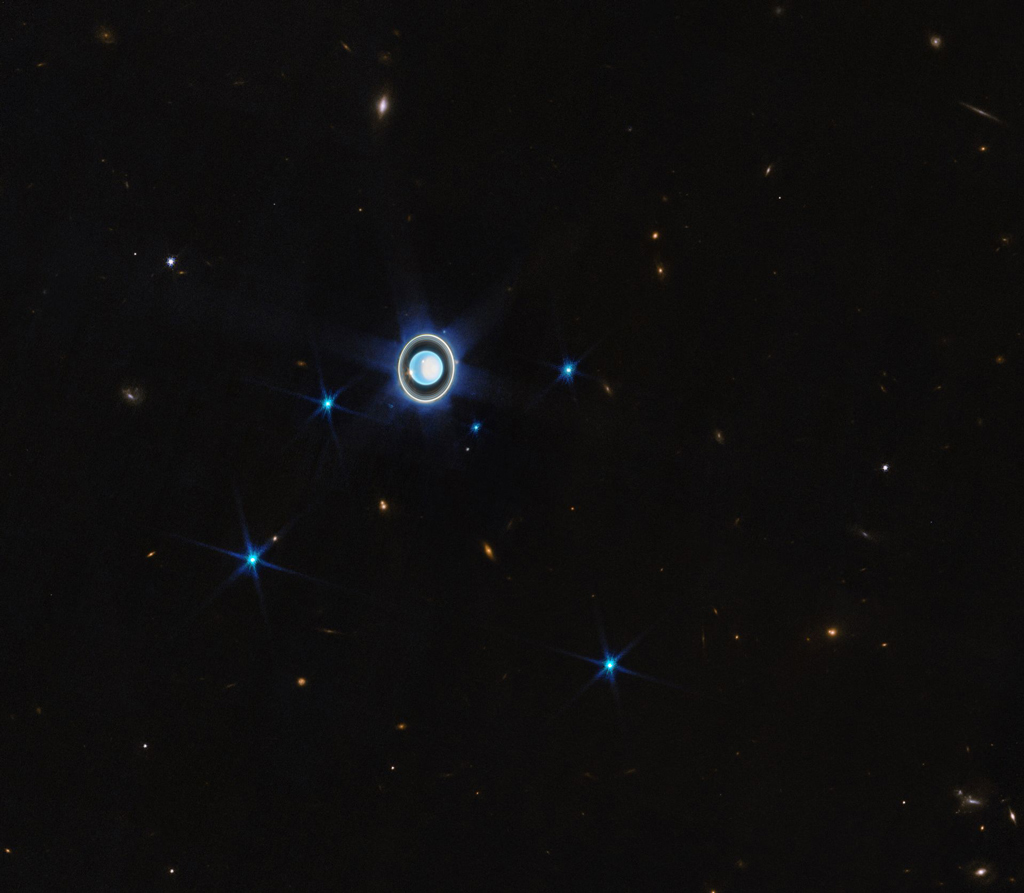
The wider view of the Uranian system with Webb’s NIRCam instrument features the planet Uranus as well as six of its 27 known moons (most of which are too small and faint to be seen in this short exposure). A handful of background objects, including many galaxies, are also seen.
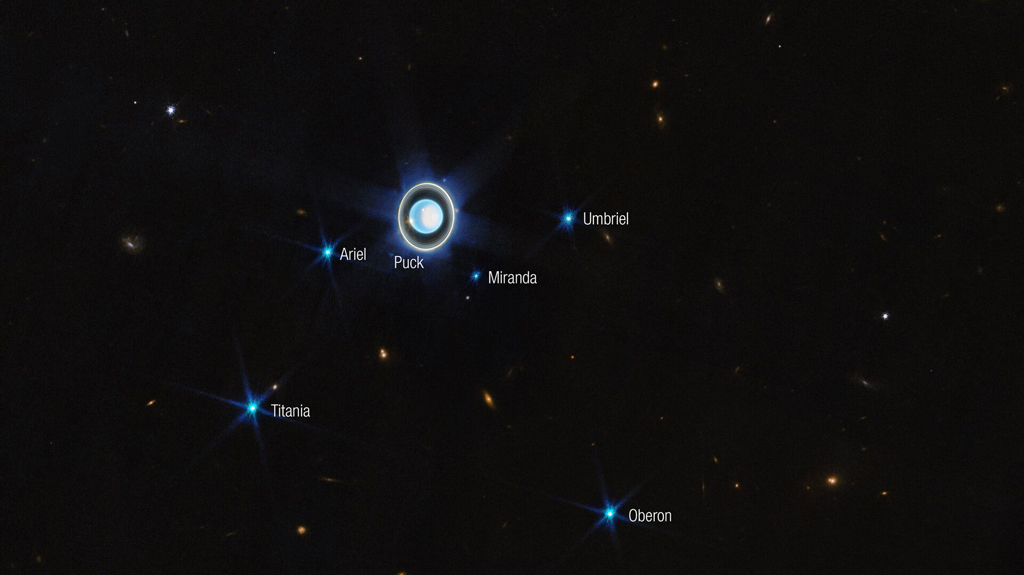
Just below the planet at the 7-o’clock position is a faint blue point labeled Puck. Brighter blue points at 8 o’clock, 5 o’clock, and 3 o’clock are labeled Ariel, Miranda, and Umbriel, respectively. Two additional blue points at 7 o’clock and 5 o’clock are labeled Titania and Oberon.

